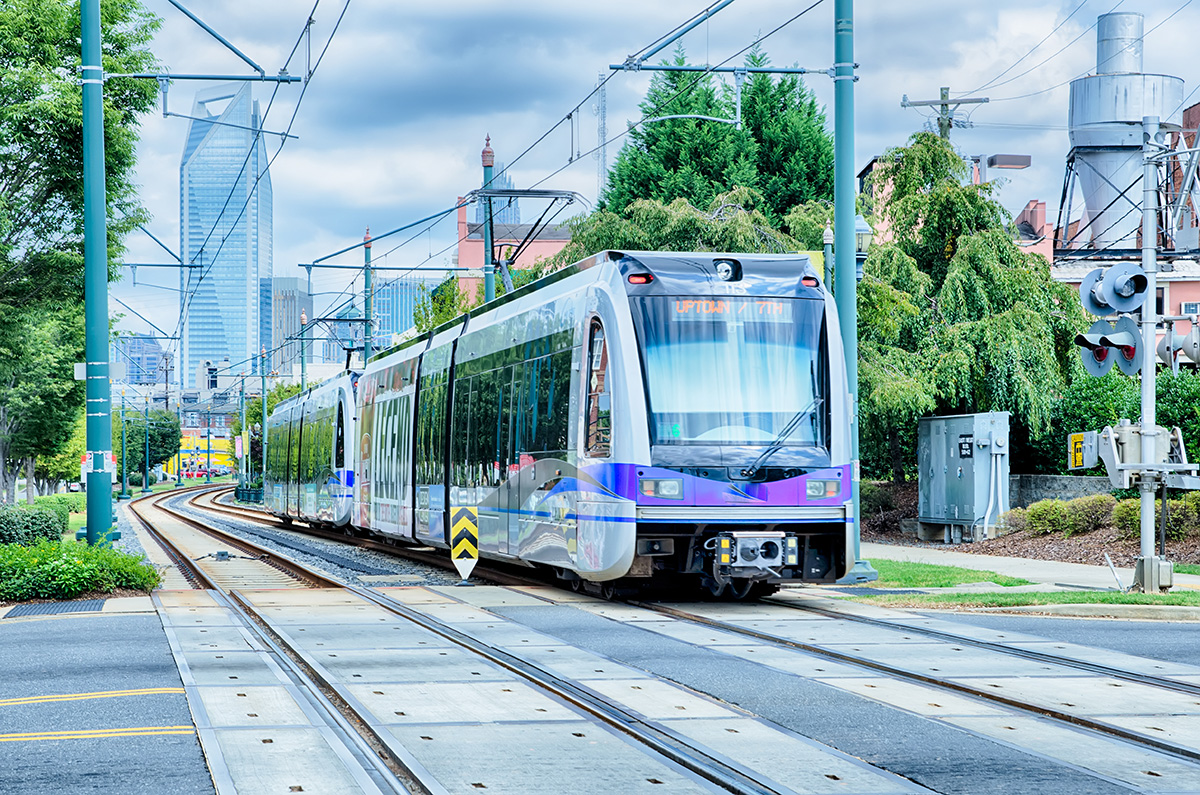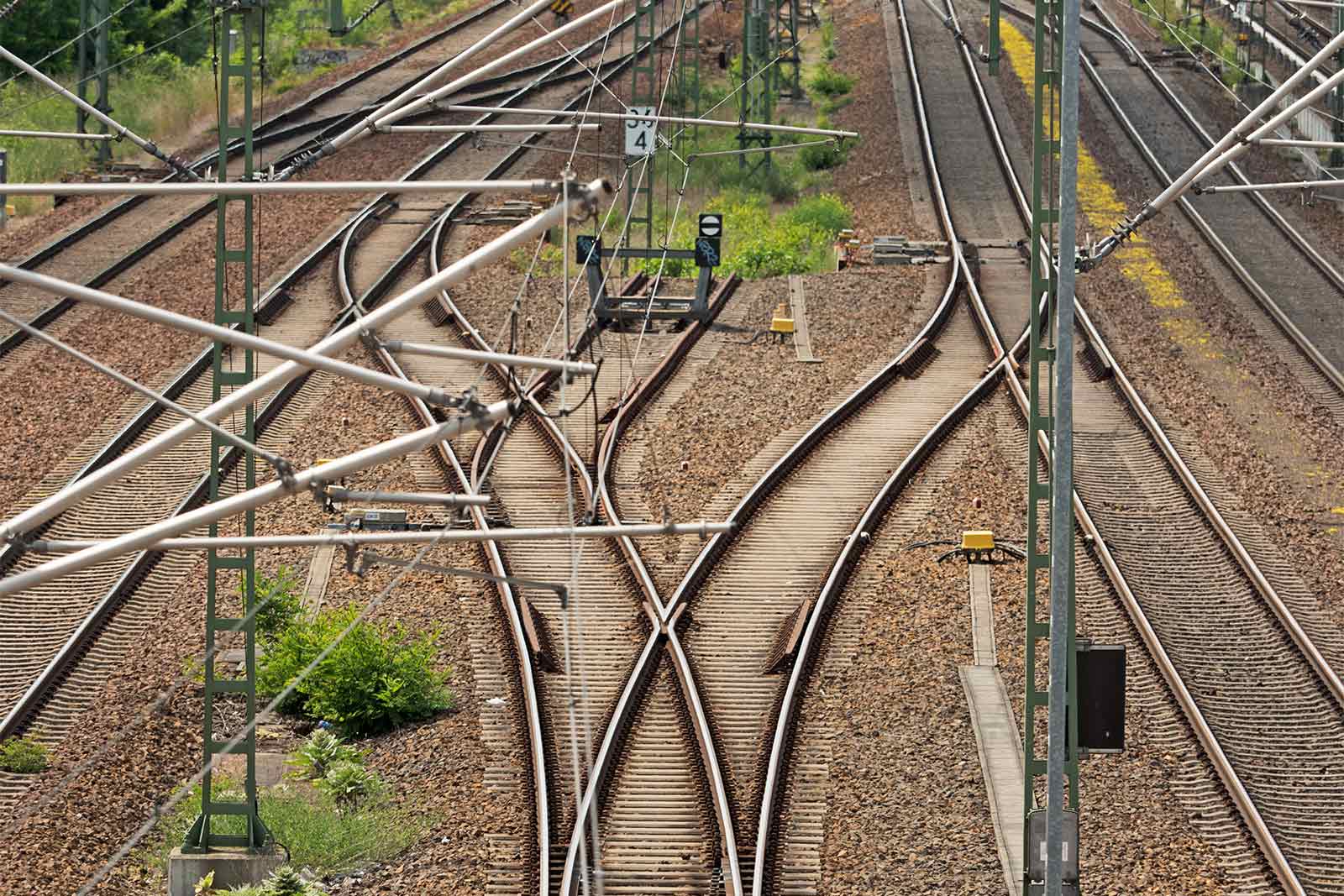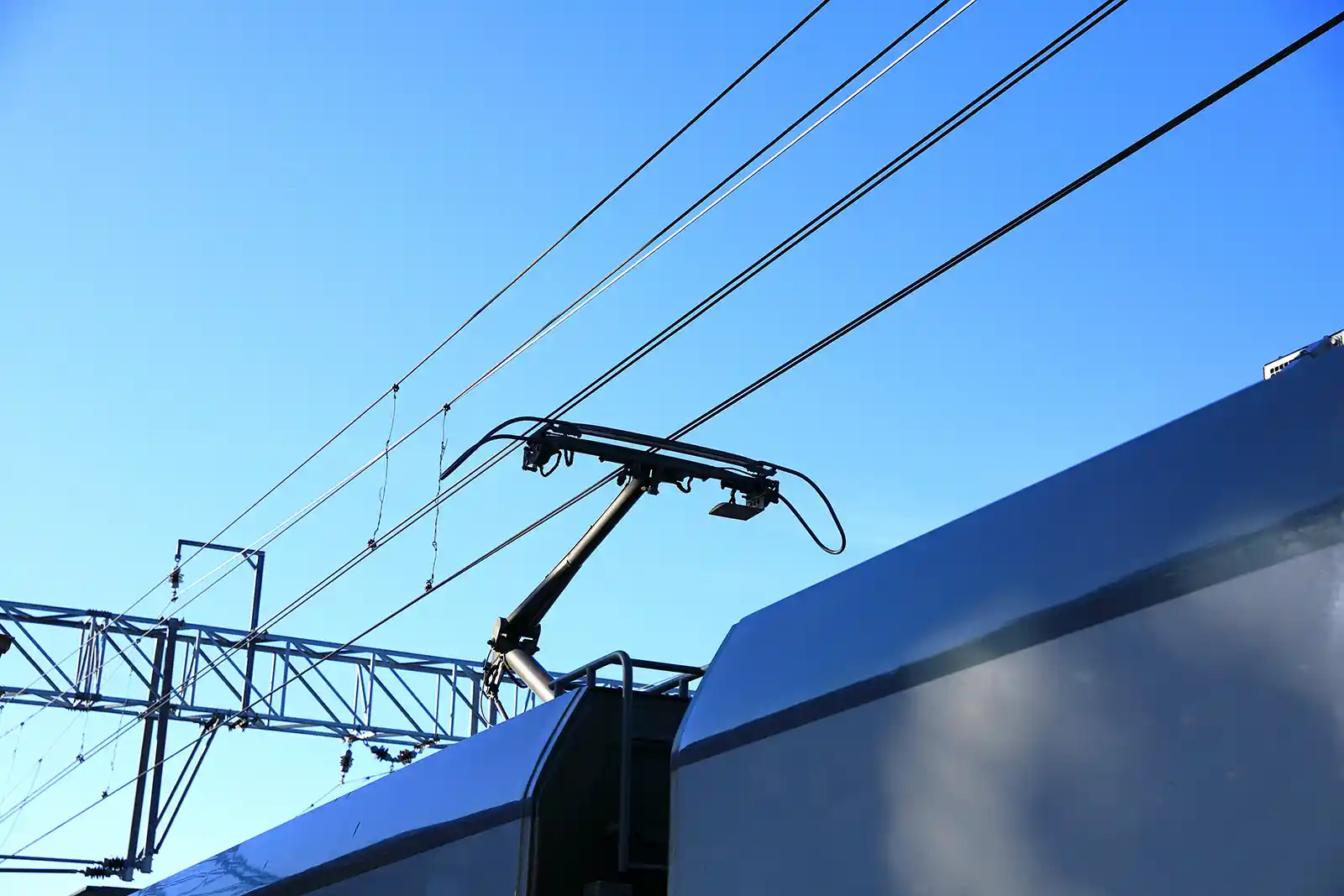Railways form the backbone of transportation systems around the world, with millions of people relying on them every day to commute to work, visit family and friends, and conduct their daily lives. Electrified railways—including both aboveground and underground railways—are complex systems that rely on many different parts and components working correctly in order for them to operate smoothly and keep us all moving.
In today’s post, we’ll take a close look at one component commonly used in all kinds of electrical contact rail systems: DC railway switches.
What Are DC Railway Switches, and How Do They Work?
A DC railway switch is an electrical component used to control the flow of electricity within an electrified railway system. DC switches work by isolating and disconnecting sections of the track or by interrupting the flow of direct current (DC) electricity that powers the trains. DC switches help transit systems run efficiently, enable safe and easy maintenance of track sections, and allow transit authorities to close or block off track sections when necessary.
Here at MAC, we supply two main categories of sectionalized switches: disconnector switches and load-break switches. The main difference between these two types is that a disconnector switch can isolate and disconnect a particular section of a circuit but does not have interrupting capabilities, while a load-break switch also has the ability to interrupt current.
Due to its interrupting capabilities, load-break switches are slightly more complicated in their construction. They are also more expensive and require more maintenance. For this reason, they’re not utilized in all applications, and most systems will include a mix of both disconnector switches and load-break switches, as applicable.
Disconnector switches are often exclusively manually operated, though electronically operated versions are available. Load-break switches, on the other hand, are usually electrically operated and include a manual operation backup for use in emergencies.
Disconnector switches are often located in substations in subway systems, allowing the cables to be de-energized when necessary. This is particularly useful when maintenance is required on the substation equipment, since the tracks tend to be energized at all times. Load-break switches are used for bypasses; when a substation is taken out of service, switches parallel to the substation can be used to power across the gap in the rail and maintain continuity while the rail’s power is still on.
The DC voltage for transit systems typically ranges from 600V up to 1500V. DC railway switches are usually rated to 2000, 4000, or 6000 amps and are designed so their temperature rises to no more than 50°C. In cases where a load-break switch is equipped with accessories—for light indication, powering the electric motor, or powering sensors—the control voltage is typically 120V VAC or 125V VDC.
Most DC switches are housed within an insulating fiberglass enclosure, offering protection from the elements. There are many different switch configurations. Some are mounted vertically, some are mounted horizontally, and others are pole mounted, wall mounted, pad mounted, or frame mounted.
What Components Are Important for DC Railway Switches to Operate?
From a design and construction standpoint, many DC railway switches are relatively basic, as all that’s needed is the ability to change the switch from an open to a closed position.
However, there are numerous other components and options that transit authorities may want to consider implementing. Remote indication, communications to interface with SCADA, voltage sensing, and mechanical interlocks to improve safety are just some examples of such possibilities.
Which Types of Rail Transportation Use DC Switches?
All forms of electrified railways use DC switches. This applies to both third-rail systems (which are commonly used belowground—for example, in subway systems) and overhead catenary systems, which are more common aboveground.
The styles of switches used for each type of system are largely driven by the relevant transit authority. Some transit systems have their own unique switch designs, and the switches are manufactured according to those specifications. Another transit authority, however, might use a different style or configuration entirely. At MAC, we can manufacture switches based on an authority’s drawings or offer a suitable option from our library of products.
Why Is DC Used in Contact Railway Switches?
DC is far more common in light rail systems (which have regularly spaced stations and operate at speeds below 60 miles per hour) than its alternative, alternating current (AC). AC is more commonly used in regional and higher-speed rail lines.
Many railway systems operate on relatively old infrastructure. Some subway systems, for example, have been in operation for more than a century. In the past, it was much easier to control a train’s speed using DC. DC also enabled a stronger performance from the vehicles.
Some overhead catenary systems do use AC power today. One advantage of AC is it’s cheaper to change the voltage of any current than it is using DC. AC systems are also ideal for transporting an electrical current over long distances as they experience less energy loss.
DC systems are most commonly used in today’s railways, however, because they are relatively cheap to manufacture and consume less energy compared to AC when operating like-for-like services. DC also doesn’t cause electrical interference to nearby communications systems.
The main difference between DC and AC train systems, though, is the location where the current is converted to DC. DC systems use efficient hardware systems at substations to perform these power conversions, whereas AC systems do this onboard the trains, resulting in a higher level of energy loss.
What to Look Out For When Maintaining Contact Rail Switches
Maintenance
There are several signs to watch for that can indicate your DC railway switches need to be maintained or replaced. Though they are fairly robust pieces of equipment, they don’t last forever.
The first sign to look for is temperature. If the switch is running unusually hot, this can indicate a problem. A one-off high temperature can be a sign of temporary overloading and isn’t usually a problem, but consistent raised temperatures over time are a red flag. Switch temperatures are usually monitored using a non-contact laser thermometer.
When using manual switches, an experienced operator may be able to tell by the feel of the switch that something’s wrong. If it suddenly takes far more (or far less) force than usual to open or close a switch, then maintenance is required. A visual inspection of the switches can also give you a lot of information.
Some systems even use inspection trains, which take thermal images to identify damage to components such as switches and cables.
Safety
There is an inherent level of risk when dealing with any type of electrical system, and safety must come first. Switches can be located in dangerous locations—for example, close to the tracks or in areas with poor access—and so care must be taken when performing maintenance.
When you’re operating a disconnect switch, always triple-check that you’re operating the correct switch for a given task. And if you’re operating a non-load-break switch, it is essential to make sure the power has been cut and that no power is flowing through the switch before you operate it. Operating it under load can cause arcing, which can injure you as well as damage the switch.
Always wear eye protection when working with railway switches.
Learn More
If you would like to learn more about anything we have discussed in this post, or about any of the DC railway switches that MAC Products manufactures and supplies, we would be pleased to hear from you. Please contact us at any time.






